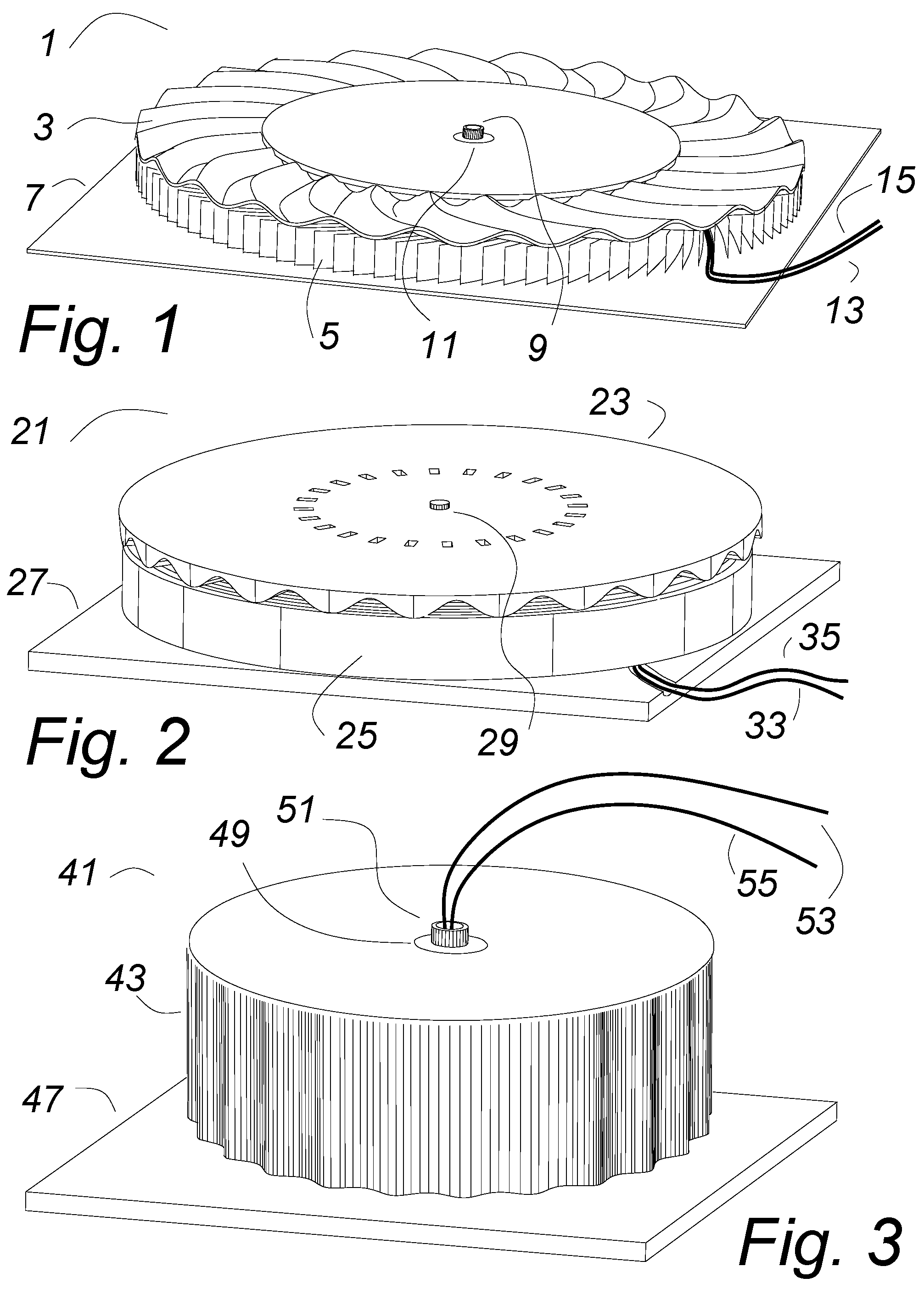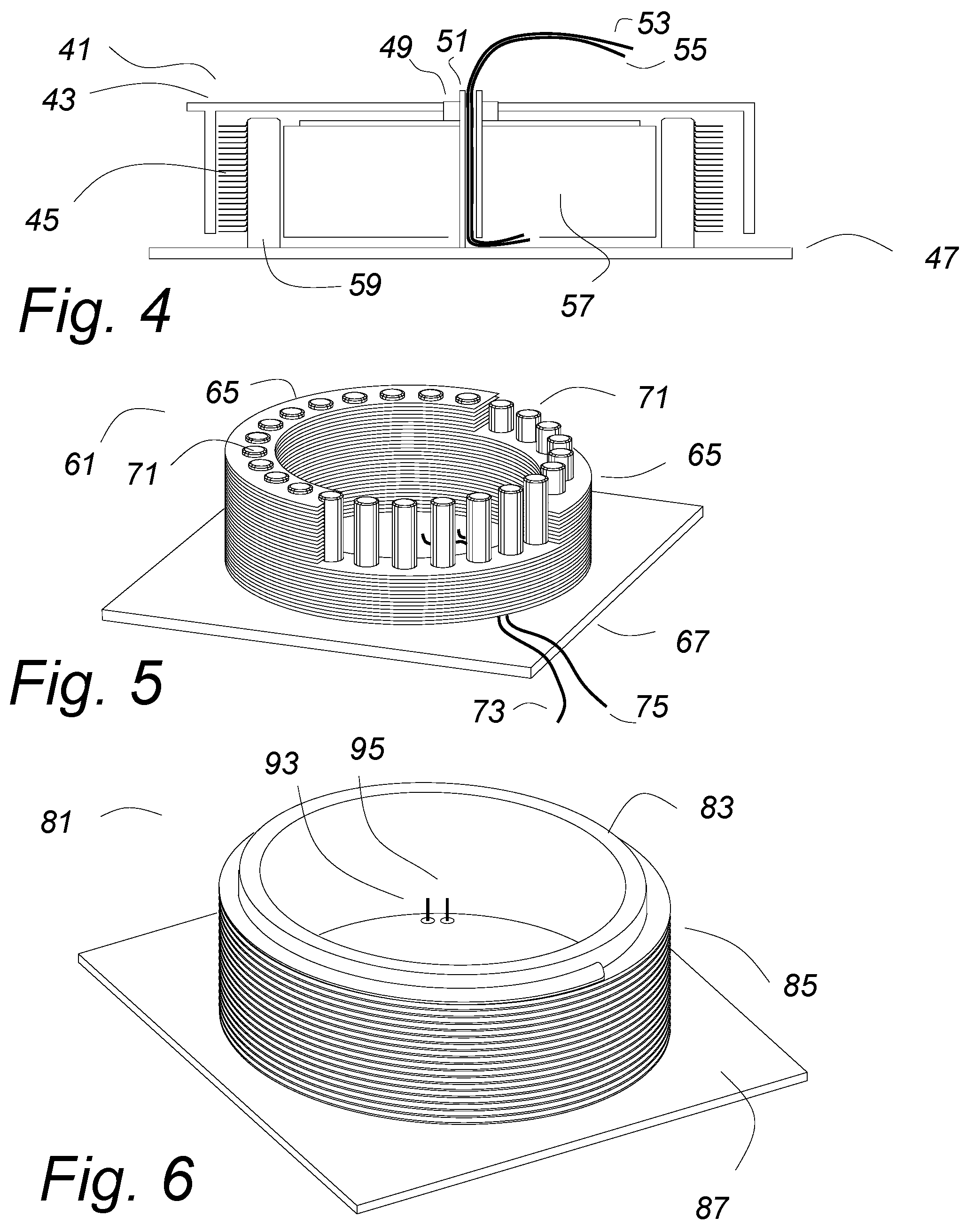Wave-fans and wave-fans with heat sinks
a technology of wavefans and fans, applied in the direction of wind motor components, non-positive displacement fluid engines, liquid fuel engine components, etc., can solve the problems of high velocity, large fan requirements, noisy fans, etc., and achieve low profile design, good heat flow into the air, and high local velocity
- Summary
- Abstract
- Description
- Claims
- Application Information
AI Technical Summary
Benefits of technology
Problems solved by technology
Method used
Image
Examples
Embodiment Construction
[0027]FIG. 1 shows a wave-fan with a heat sink 1 comprising a wave-fan that is a wave-plane fan 3 rotating above a flat finned heat sinking means 5. A motor means (not visible) turns the fan 3. A motor shaft 11 turns the fan 3. The whole is on a base plate 7 that is a “cold plate”. A tube 9 may run through the motor to locate and retain the motor and also to provide a vent access to the bottom surface of the base plate 7 to facilitate mounting to a heat source with vacuum. The fan 3 and the heat sink 5 are discussed in more detail below. Wires 13 and 15 may thread between fins of the heat sink 5 to provide power to the motor means (not visible).
[0028]The bottom surface of the wave-plane fan 3 comprises an active fluid moving surface comprises a plurality of ridges and valleys having a generally sinusoidal contour along the direction of rotation of the wave-plane fan 3. The top surface of the flat finned heat sinking means 5 is its active heat dissipating surface. The active surface ...
PUM
 Login to View More
Login to View More Abstract
Description
Claims
Application Information
 Login to View More
Login to View More - R&D
- Intellectual Property
- Life Sciences
- Materials
- Tech Scout
- Unparalleled Data Quality
- Higher Quality Content
- 60% Fewer Hallucinations
Browse by: Latest US Patents, China's latest patents, Technical Efficacy Thesaurus, Application Domain, Technology Topic, Popular Technical Reports.
© 2025 PatSnap. All rights reserved.Legal|Privacy policy|Modern Slavery Act Transparency Statement|Sitemap|About US| Contact US: help@patsnap.com



